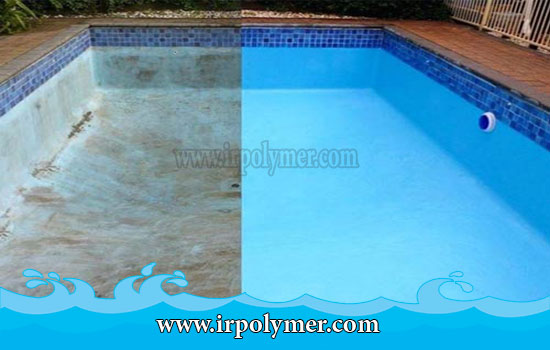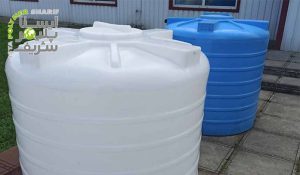Polymeric Pool Coating or polymeric pool coating services are among the offerings of ABtank. Whether for swimming pools, fish ponds, or agricultural water storage pools, the pool floor coating must be durable and prevent algae growth. Concrete pools face issues like algae growth, sediment buildup, and water seepage due to their porous nature. Using polymeric pool coatings can provide good resistance. The types and subcategories of polymeric pool coatings include:
- Geomembrane Sheets
- Geotextile Sheets
- Geocomposite Sheets
- Water Evaporation Mesh
- Clipped Polyethylene Sheets
- Pool Nylon
- Drainage Sheets
- Various resistant polymer paints, including epoxy and polyurethane coatings
Most Common and Widely Used Pool Coatings
Geomembranes are a type of polymeric coating used for waterproofing earth and cement pools as well as storage tanks for water and chemicals. Geomembranes are primarily made of polymer materials such as PVC and polyethylene. These materials have a long service life and are nearly impermeable. In earthen pools, using polymeric geomembrane coatings does not require extensive groundwork. Advantages of using geomembranes include reduced costs, shorter installation time, prevention of algae and moss growth, and high resistance to environmental conditions.
Geotextile pool flooring is made from polyester, polyamide, and polypropylene fibers, either woven or non-woven. These materials offer high tensile strength and resistance to soil degradation, making them suitable for earthen pools. Geotextiles are used underneath geomembranes to protect against potential damage at deeper levels. Polyester, epoxy, and polyurethane are commonly used polymer paints, all of which offer excellent resistance and adhesion.
Features of Polymer Paints for Pools
- Excellent adhesion to underlying surfaces such as concrete and metal
- Resistance to metal corrosion on the pool’s underlying structure
- Resistance to moisture and water absorption
- Abrasion resistance
- High thermal resistance
- Easy and quick application
- Seamless, impermeable surface
- High insulating properties
- Dust-resistant due to a smooth, cohesive surface
- Thin yet durable
- Easy cleaning
- Low maintenance
- Long service life
Cost of Polymer Pool Paint
The cost of polymer pool paint depends on various factors, including the type of polymer, resin hardener, the thickness of the pool coating, the use of nanomaterials, and surface preparation. Polyurethane paint is the most expensive but offers very high resistance to UV rays without degradation. Polyester is cheaper compared to epoxy flooring but emits toxic gases. Therefore, epoxy is more environmentally friendly and cost-effective compared to polyurethane and is widely used for pool coatings. The thicker the pool paint, the more paint is required, which increases the total cost. Using some nanomaterials as fillers can reduce the paint cost.
If surface preparation takes a long time, the total cost will be higher. This means that the harder it is to clean the surface of contaminants like dust and grease, the more time is required. Sometimes, filling and smoothing the pool floor may be necessary, which requires time and filler materials, further increasing the total paint cost.






